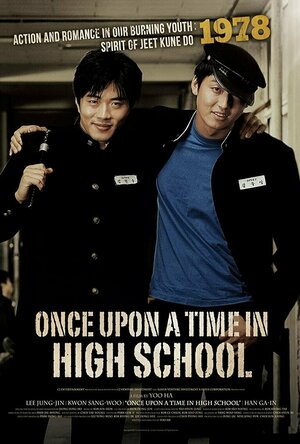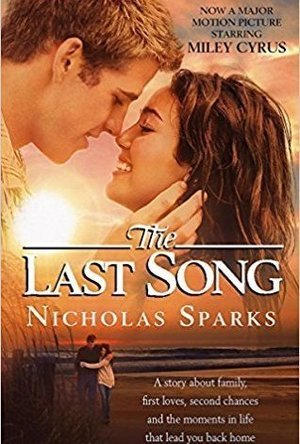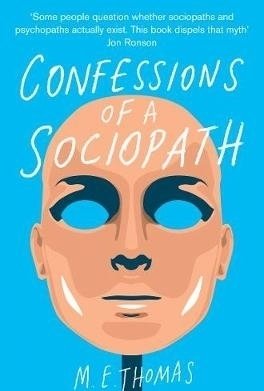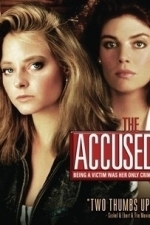Search

The Rose and the Ring
Book
The plot opens on the royal family of Paflagonia eating breakfast together: King Valoroso, his wife,...
BankofMarquis (1832 KP) rated Thor: Love and Thunder (2022) in Movies
Jul 8, 2022
Good Character Arcs for Thor and Jane
Under the Writing and Direction of Taika Waititi, the THOR franchise portion of the Marvel Cinematic Universe has gone in a more comedic, rather than Shakespearean, direction and THOR: LOVE AND THUNDER proves that this direction is a smart one both for THOR and for the overall health and diversity of the Marvel Cinematic Universe as well.
Starring Chris Hemsworth, of course, as the titular THOR, Love and Thunder shows our demi-god hero at a crossroads in his life and career. Into this world walks his ex-girlfriend, Jane Foster (Natalie Portman) and chaos ensues as both are chasing the god-killer, Gorr (Christian Bale).
This sort of premise set-up (and the fact that Hemsworth is playing THOR for the 8th time), could have fallen victim to banality and dullness, but under the watchful eye of Waititi (Writer/Director of the severely under-rated JOJO RABBIT), this THOR soars with the best of them and develops the overall arc and (eventual) pay-off of both Thor’s and Jane’s arcs precisely and (upon retrospection) in the only satisfying way that they could have ended. So, kudos needs to be given to Waititi for walking this tightrope and sticking the landing.
Hemsworth, of course, is charming and buff as Thor and balances the action, romantic drama and comedic portions of this story well. Waititi brings more than just comic relief (though he has plenty of that as well) as the voice of Thor’s buddy KORG, while Christian Bale is more than just one-dimensional (how can this actor be anything but interesting) as the main villain of this piece..
What surprised me the most in this film is the portrayal of Jane Foster by Portman and how her character becomes the “female Thor” (that’s not a spoiler, it’s in the trailers) and does NOT become just “Thor’s girlfriend”. Portman has made no secret of her distaste of how her character became the femme fatale in THOR: THE DARK WORLD and refused to return to this character previously. Obviously, Waititi has been able to come up with a storyline - and an arc - that would interest an actress like Portman to return and Natalie nails it. She looked bright-eyed and energized by this part and by where her character goes in this film.
And then there is Tessa Thompson’s Valkyrie. This character is a strong part of Thor’s story - and the story of the survivors of Asgaard (their destroyed homeworld). Thompson owns this part and is engaging and interesting to watch on-screen. Out of necessity, her character and story play a supporting role to the main Thor/Jane story, so her character didn’t get quite enough to do for my tastes. But it did whet my appetite for a stand-alone Valkyrie film (make that happen Marvel).
There are cameos and extended-cameos galore in this film - as well as TWO end credits scenes - so to mention them would be to spoil them, except to say that the GUARDIANS OF THE GALAXY play a pivotal role, but for those who came to see a GUARDIANS film, you’ll have to wait for GUARDIANS 3 to come out next year - this is a THOR film.
A very satisfying entry in the Marvel Cinematic Universe and while not a perfect film (it does try too hard, at times, to mine the same, surprise comic gold of THOR: RAGNAROK), THOR: LOVE AND THUNDER delivers a stand-alone Thor story that drives both the characters of Thor and Jane forward in a smart, intelligent way…and when is the last time the words “smart and intelligent” were used with a comic book film)?
Letter Grade: A-
8 stars (out of 10) and can take that to the Bank(ofMarquis)
Starring Chris Hemsworth, of course, as the titular THOR, Love and Thunder shows our demi-god hero at a crossroads in his life and career. Into this world walks his ex-girlfriend, Jane Foster (Natalie Portman) and chaos ensues as both are chasing the god-killer, Gorr (Christian Bale).
This sort of premise set-up (and the fact that Hemsworth is playing THOR for the 8th time), could have fallen victim to banality and dullness, but under the watchful eye of Waititi (Writer/Director of the severely under-rated JOJO RABBIT), this THOR soars with the best of them and develops the overall arc and (eventual) pay-off of both Thor’s and Jane’s arcs precisely and (upon retrospection) in the only satisfying way that they could have ended. So, kudos needs to be given to Waititi for walking this tightrope and sticking the landing.
Hemsworth, of course, is charming and buff as Thor and balances the action, romantic drama and comedic portions of this story well. Waititi brings more than just comic relief (though he has plenty of that as well) as the voice of Thor’s buddy KORG, while Christian Bale is more than just one-dimensional (how can this actor be anything but interesting) as the main villain of this piece..
What surprised me the most in this film is the portrayal of Jane Foster by Portman and how her character becomes the “female Thor” (that’s not a spoiler, it’s in the trailers) and does NOT become just “Thor’s girlfriend”. Portman has made no secret of her distaste of how her character became the femme fatale in THOR: THE DARK WORLD and refused to return to this character previously. Obviously, Waititi has been able to come up with a storyline - and an arc - that would interest an actress like Portman to return and Natalie nails it. She looked bright-eyed and energized by this part and by where her character goes in this film.
And then there is Tessa Thompson’s Valkyrie. This character is a strong part of Thor’s story - and the story of the survivors of Asgaard (their destroyed homeworld). Thompson owns this part and is engaging and interesting to watch on-screen. Out of necessity, her character and story play a supporting role to the main Thor/Jane story, so her character didn’t get quite enough to do for my tastes. But it did whet my appetite for a stand-alone Valkyrie film (make that happen Marvel).
There are cameos and extended-cameos galore in this film - as well as TWO end credits scenes - so to mention them would be to spoil them, except to say that the GUARDIANS OF THE GALAXY play a pivotal role, but for those who came to see a GUARDIANS film, you’ll have to wait for GUARDIANS 3 to come out next year - this is a THOR film.
A very satisfying entry in the Marvel Cinematic Universe and while not a perfect film (it does try too hard, at times, to mine the same, surprise comic gold of THOR: RAGNAROK), THOR: LOVE AND THUNDER delivers a stand-alone Thor story that drives both the characters of Thor and Jane forward in a smart, intelligent way…and when is the last time the words “smart and intelligent” were used with a comic book film)?
Letter Grade: A-
8 stars (out of 10) and can take that to the Bank(ofMarquis)
Haley Mathiot (9 KP) rated The Last Song in Books
Apr 27, 2018
My Summary: Ronnie does not want to spend the summer with her dad. Her dad left them three years ago, and she hasn’t really forgiven him for it. She hated him for it so much, that she refused to take his calls, quit playing the piano, and never read the letters he sent her. What is she going to do all summer stuck with a dad she hates in a small town with nothing but sand on every side of her, no clubs, no friends…
When she finds Will, the cutest volley-ball players slash aquarium volunteer in her back yard helping her protect un-hatched sea turtles from being eaten by raccoons, she judged him as not-her-type. She doesn’t expect to find a friend in a jock-rich-perfect-family boy, nor does she expect that this will be the best—most exciting, most scary, most fun, most painful—summer of her lifetime.
My Review: I’m not really sure where to start here, other than I am so utterly pleased with The Last Song, I cannot begin to find words to describe it.
Ronnie, Jonah (her brother), Her dad Steve, Will… all the characters really, were such real characters. I felt everything they felt, I laughed when they laughed, and I (nearly) cried when they cried.
I hate it when books suffer from "happy-land syndrome—" where everything works out just too perfectly that it seems silly. The Last Song seemed to work perfectly, but it didn’t have that plot-manipulated feel to it. It didn’t feel like Sparks was just trying to move the story along and causing things to line up too perfectly to be realistic—it felt like the story was writing itself, and it was perfect. The pacing didn’t feel rushed or slow. It was not a thriller, but I did find myself sitting on the edge of my seat dying to find out what happens. I read it through in two or three days (which is fast for me right now, what with school the way it is!). There are twists, there are surprises—some beautiful, some painful, but all wonderful.
The writing was contemporary. It was easy reading and it wasn’t Dostoevsky, but it wasn’t bad either. The humor was light and witty and sarcastic, sometimes laugh out loud, and more times than I can count my sister would look up from her homework and say “Haley. What is so funny?” The perspective alternated between several different characters, but it wasn’t disorientating. It was all from third person perspective, but I still felt like I could get inside the character’s head.
The end was perfect. That’s all I can really say about it because any information would totally ruin the story. All the loose ends were tied, all the questions were answered, and the ending was open to the future but closed in a wonderful conclusion. Suffice to say I grinned so wide I couldn’t see, and my cheeks are still sore.
Audio Review: Let’s just say that I almost gave up reading The Last Song when I started listening to the audio. Pepper Binkley read Ronnie’s perspective and had a high pitched voice, she read a little too fast (which is rare. Most of the time readers are way too slow), there was no differentiating between voices of characters so you couldn’t tell who was talking, and she seemed up tight and nervous. Scott Sowers read the various men’s perspectives, and he read alright. He was a little slow and his voice took some getting used to but he was otherwise ok. I did get too frustrated to get far in the audio book though. I ended up quitting and reading the paperback. I recommend reading The Last Song over listening to it.
Content: blissfully clean. There was romance between Will and Ronnie, but no sex. It wasn’t needed, either. I feel like the fact that they didn’t sleep together added to the book rather than took away from it. It was also clean of foul language. There was some mention of God and the Bible, but never did it feel like Sparks was preaching.
Recommendation: Ages 14+
When she finds Will, the cutest volley-ball players slash aquarium volunteer in her back yard helping her protect un-hatched sea turtles from being eaten by raccoons, she judged him as not-her-type. She doesn’t expect to find a friend in a jock-rich-perfect-family boy, nor does she expect that this will be the best—most exciting, most scary, most fun, most painful—summer of her lifetime.
My Review: I’m not really sure where to start here, other than I am so utterly pleased with The Last Song, I cannot begin to find words to describe it.
Ronnie, Jonah (her brother), Her dad Steve, Will… all the characters really, were such real characters. I felt everything they felt, I laughed when they laughed, and I (nearly) cried when they cried.
I hate it when books suffer from "happy-land syndrome—" where everything works out just too perfectly that it seems silly. The Last Song seemed to work perfectly, but it didn’t have that plot-manipulated feel to it. It didn’t feel like Sparks was just trying to move the story along and causing things to line up too perfectly to be realistic—it felt like the story was writing itself, and it was perfect. The pacing didn’t feel rushed or slow. It was not a thriller, but I did find myself sitting on the edge of my seat dying to find out what happens. I read it through in two or three days (which is fast for me right now, what with school the way it is!). There are twists, there are surprises—some beautiful, some painful, but all wonderful.
The writing was contemporary. It was easy reading and it wasn’t Dostoevsky, but it wasn’t bad either. The humor was light and witty and sarcastic, sometimes laugh out loud, and more times than I can count my sister would look up from her homework and say “Haley. What is so funny?” The perspective alternated between several different characters, but it wasn’t disorientating. It was all from third person perspective, but I still felt like I could get inside the character’s head.
The end was perfect. That’s all I can really say about it because any information would totally ruin the story. All the loose ends were tied, all the questions were answered, and the ending was open to the future but closed in a wonderful conclusion. Suffice to say I grinned so wide I couldn’t see, and my cheeks are still sore.
Audio Review: Let’s just say that I almost gave up reading The Last Song when I started listening to the audio. Pepper Binkley read Ronnie’s perspective and had a high pitched voice, she read a little too fast (which is rare. Most of the time readers are way too slow), there was no differentiating between voices of characters so you couldn’t tell who was talking, and she seemed up tight and nervous. Scott Sowers read the various men’s perspectives, and he read alright. He was a little slow and his voice took some getting used to but he was otherwise ok. I did get too frustrated to get far in the audio book though. I ended up quitting and reading the paperback. I recommend reading The Last Song over listening to it.
Content: blissfully clean. There was romance between Will and Ronnie, but no sex. It wasn’t needed, either. I feel like the fact that they didn’t sleep together added to the book rather than took away from it. It was also clean of foul language. There was some mention of God and the Bible, but never did it feel like Sparks was preaching.
Recommendation: Ages 14+
Roxanne (13 KP) rated Confessions of a Sociopath: A Life Spent Hiding in Plain Sight in Books
Nov 14, 2018
<b>*This review contains possible spoilers as I will be using quotes*</b>
I thought I would mention that I am rating my enjoyment of this book which is 2 stars; if I was to rate the personality of the author I would be giving it minus stars.
This book made me feel very uncomfortable in places and so I could not give this a higher rating because I did not enjoy it, I found it interesting but not enjoyable.
I was only a few pages in when I came across intentional animal cruelty where this horrible woman attempts to drown an Opossum...animal abuse is something I will not tolerate no matter if you cover it up by saying you're 'ill'. This person is not humane and refused to help this defenseless creature due to it's safety not being an <i>"upside for me"</i>. And it gets worse...
<img src="http://dingo.care2.com/pictures/greenliving/uploads/2012/03/baby-virginia-opossum.jpg"; width="280" height="160"/>
<b>Look at that face! Look at it!</b>
I am truly disgusted by that behaviour and the behaviour that follows throughout the whole of the book, she goes on to say how she is not crazy, dangerous or a murderer...yet she does that.
Would it put me and her on the same path if I reacted in anger?
<img src="http://media3.giphy.com/media/2vCA7jpfORJoA/200_s.gif"; width="250" height="160"/>
Naaaaaah...I think it's justified.
She attempts to argue whether her sociopathic traits are a result of 'nature' or 'nuture' and blames the family tree for her unsociable ways as her grandfather was <i>exceptionally cold</i>, on the other hand, I have never met (or read about) someone so full of themself...NEVER EVER...I'm surprised that she can fit her head through doors. She uses this 'God like' view of herself to look down upon others, including insulting the reader by saying how much more intelligent she is compared to you. Face reality...why on earth would anyone choose to read your book if you're just out to offend them? (I realize this comes with being 'a sociopath') but I wanted the whys and hows...not to be offended.
<img src="http://sarahsaysreadbooks.files.wordpress.com/2012/11/not-interested.gif?w=500"; width="200" height="160"/>
M.E Thomas will only enter situations if it will benefit her, this includes making friends where she will seek out their weaknesses to eventually use against them...just for fun, she says <i>"I like to imagine that I have ruined people"</i> and she likes to humour people for her own personal gain. Thomas sees this as a great strength and believes others wish to be like her as she feels a lot less emotion and remorse than the majority of other people; <i>"Normal people feel emotions that I simply don't"</i> she pities us, whereas I pity her.
Another thing that she did which I found disgusting was abandoning a friend who was upset as her dad had cancer...yes you read that right... abandoned a <b>friend</b> because her dad had <b>CANCER</b>.
<img src="http://c0.thejournal.ie/media/2013/10/shock-gif.gif"; width="230" height="160"/>
She thought the behaviour was acceptable as she <i>routinely disposed of people once their burden to me exceeded their utility</i>. Another example of 'friend abuse' would be towards her openly gay female coworker, who was adopted as a child, where Thomas gathered as much information as possible about her in order to destroy her...nice.
People like Thomas are the ones who I wish to avoid at all costs! I admit I have met my fair share of sociopaths as I believe I am picked out by them due to being easily manipulated, however, as I mature I hope to change that. She is nothing but a bully who tears people to pieces, picking on those with disabilities saying because of this 'weakness' they were just asking for a slap. Thomas is the only one here who is asking for a slap!
I admit the book was interesting, I was able to understand more about sociopaths and what to look out for so I can avoid them...that is all.
<img src="http://24.media.tumblr.com/fb0875f182f29fa753415dcd6a5812a5/tumblr_n4kc2ffJui1txb8sho1_500.gif"; width="280" height="160"/>
I thought I would mention that I am rating my enjoyment of this book which is 2 stars; if I was to rate the personality of the author I would be giving it minus stars.
This book made me feel very uncomfortable in places and so I could not give this a higher rating because I did not enjoy it, I found it interesting but not enjoyable.
I was only a few pages in when I came across intentional animal cruelty where this horrible woman attempts to drown an Opossum...animal abuse is something I will not tolerate no matter if you cover it up by saying you're 'ill'. This person is not humane and refused to help this defenseless creature due to it's safety not being an <i>"upside for me"</i>. And it gets worse...
<img src="http://dingo.care2.com/pictures/greenliving/uploads/2012/03/baby-virginia-opossum.jpg"; width="280" height="160"/>
<b>Look at that face! Look at it!</b>
I am truly disgusted by that behaviour and the behaviour that follows throughout the whole of the book, she goes on to say how she is not crazy, dangerous or a murderer...yet she does that.
Would it put me and her on the same path if I reacted in anger?
<img src="http://media3.giphy.com/media/2vCA7jpfORJoA/200_s.gif"; width="250" height="160"/>
Naaaaaah...I think it's justified.
She attempts to argue whether her sociopathic traits are a result of 'nature' or 'nuture' and blames the family tree for her unsociable ways as her grandfather was <i>exceptionally cold</i>, on the other hand, I have never met (or read about) someone so full of themself...NEVER EVER...I'm surprised that she can fit her head through doors. She uses this 'God like' view of herself to look down upon others, including insulting the reader by saying how much more intelligent she is compared to you. Face reality...why on earth would anyone choose to read your book if you're just out to offend them? (I realize this comes with being 'a sociopath') but I wanted the whys and hows...not to be offended.
<img src="http://sarahsaysreadbooks.files.wordpress.com/2012/11/not-interested.gif?w=500"; width="200" height="160"/>
M.E Thomas will only enter situations if it will benefit her, this includes making friends where she will seek out their weaknesses to eventually use against them...just for fun, she says <i>"I like to imagine that I have ruined people"</i> and she likes to humour people for her own personal gain. Thomas sees this as a great strength and believes others wish to be like her as she feels a lot less emotion and remorse than the majority of other people; <i>"Normal people feel emotions that I simply don't"</i> she pities us, whereas I pity her.
Another thing that she did which I found disgusting was abandoning a friend who was upset as her dad had cancer...yes you read that right... abandoned a <b>friend</b> because her dad had <b>CANCER</b>.
<img src="http://c0.thejournal.ie/media/2013/10/shock-gif.gif"; width="230" height="160"/>
She thought the behaviour was acceptable as she <i>routinely disposed of people once their burden to me exceeded their utility</i>. Another example of 'friend abuse' would be towards her openly gay female coworker, who was adopted as a child, where Thomas gathered as much information as possible about her in order to destroy her...nice.
People like Thomas are the ones who I wish to avoid at all costs! I admit I have met my fair share of sociopaths as I believe I am picked out by them due to being easily manipulated, however, as I mature I hope to change that. She is nothing but a bully who tears people to pieces, picking on those with disabilities saying because of this 'weakness' they were just asking for a slap. Thomas is the only one here who is asking for a slap!
I admit the book was interesting, I was able to understand more about sociopaths and what to look out for so I can avoid them...that is all.
<img src="http://24.media.tumblr.com/fb0875f182f29fa753415dcd6a5812a5/tumblr_n4kc2ffJui1txb8sho1_500.gif"; width="280" height="160"/>
Lucy Buglass (45 KP) rated Halloween (2018) in Movies
Jun 20, 2019
Michael’s back, back again
Happy Halloween everyone! What better way to celebrate than with my review of the latest in the Halloween franchise?
40 years after John Carpenter’s iconic horror film, we are greeted with a brand new instalment in Michael Myers’ saga. It feels like a really special moment for horror fans, as we reflect on the original decades later. The opening credits pay homage to the 1978 and provide some nostalgia for long time fans by using the same text and soundtrack that audiences would’ve seen on the big screen back then. This was a great stylistic choice as it really gets you feeling pumped for what’s to come.
The film opens with Myers in a high security facility, where two true crime podcasters attempt to communicate with him in order to learn more about him and the murders he committed. Unsurprisingly, Michael refuses to say anything, providing a seriously uncomfortable moment for the audience. Throughout the film, we don’t see or hear him, and shots of him without the mask are always the back of his head. I would have been very disappointed if they’d decided to show his face throughout, as this sense of facelessness is something that’s always scared me about him. He’s a silent killer, never jumping out and screaming, but hiding in the shadows waiting to strike at any point. Most interactions with Myers are tense, uncomfortable and nail biting. His presence alone has that effect on you.
As ever, it was a joy to see Jamie Lee Curtis reprise her role as original Myers’ victim, Laurie Strode. Throughout the film, Strode’s paranoia is hard to brush off, and actually makes you feel more on edge. It was great seeing how she’d aged, yet refused to move on, and Curtis really brought her to life once again. She was the highlight of the film for me, as she was far from a cowering victim, and someone who wanted Myers dead for good. Having said that, you can tell how much she still fears him and how she’s suffering with long-term PTSD after almost being murdered. Let’s face it, anyone would feel the same way.
Unfortunately, I did find some of the acting a bit cringeworthy and it took away from the overall experience. I know that horror films have a bit of a reputation for terrible acting and dialogue, but I felt like such an important franchise deserved better than that. In my screening there were a few laugh out loud moments, and I don’t think all of them were intentional. One thing I will say is that child actor Jibrail Nantambu is one to watch because he was such a character and brought some genuine humour to the scenes he was in. I hope he goes far. Michael’s handler Dr. Ranbir Sartain is also an interesting character that I won’t say much about, but his development throughout is particularly great.
Admittedly I would’ve preferred less focus on teenagers, families and their dramas, and more on Michael and the actual kills. The film was meant to be about him and Laurie, after all. Whilst I was mostly satisfied by the brutality and some really gruesome moments, I felt it had been hyped up to the point where I expected more. Is that bad? Have I just become desensitised to bloody moments? I’m not quite sure. Having said that, one scene in particular did have me on the edge of my seat so it was still able to provide that adrenaline rush despite all its flaws. I’m still really bloody scared of Michael Myers.
Overall, Halloween is certainly watchable and a great visit to the cinema, especially this evening. Whilst I’m not the world’s biggest Halloween fan and there are certain films in the franchise I haven’t even seen, I still enjoyed this and understood what was going on. If you’re a big horror fan, particularly of the classics, give this a go. It might give you some welcome nostalgia and scares, and maybe that’s enough.
https://lucygoestohollywood.com/2018/10/31/halloween-2018-michaels-back-back-again/
40 years after John Carpenter’s iconic horror film, we are greeted with a brand new instalment in Michael Myers’ saga. It feels like a really special moment for horror fans, as we reflect on the original decades later. The opening credits pay homage to the 1978 and provide some nostalgia for long time fans by using the same text and soundtrack that audiences would’ve seen on the big screen back then. This was a great stylistic choice as it really gets you feeling pumped for what’s to come.
The film opens with Myers in a high security facility, where two true crime podcasters attempt to communicate with him in order to learn more about him and the murders he committed. Unsurprisingly, Michael refuses to say anything, providing a seriously uncomfortable moment for the audience. Throughout the film, we don’t see or hear him, and shots of him without the mask are always the back of his head. I would have been very disappointed if they’d decided to show his face throughout, as this sense of facelessness is something that’s always scared me about him. He’s a silent killer, never jumping out and screaming, but hiding in the shadows waiting to strike at any point. Most interactions with Myers are tense, uncomfortable and nail biting. His presence alone has that effect on you.
As ever, it was a joy to see Jamie Lee Curtis reprise her role as original Myers’ victim, Laurie Strode. Throughout the film, Strode’s paranoia is hard to brush off, and actually makes you feel more on edge. It was great seeing how she’d aged, yet refused to move on, and Curtis really brought her to life once again. She was the highlight of the film for me, as she was far from a cowering victim, and someone who wanted Myers dead for good. Having said that, you can tell how much she still fears him and how she’s suffering with long-term PTSD after almost being murdered. Let’s face it, anyone would feel the same way.
Unfortunately, I did find some of the acting a bit cringeworthy and it took away from the overall experience. I know that horror films have a bit of a reputation for terrible acting and dialogue, but I felt like such an important franchise deserved better than that. In my screening there were a few laugh out loud moments, and I don’t think all of them were intentional. One thing I will say is that child actor Jibrail Nantambu is one to watch because he was such a character and brought some genuine humour to the scenes he was in. I hope he goes far. Michael’s handler Dr. Ranbir Sartain is also an interesting character that I won’t say much about, but his development throughout is particularly great.
Admittedly I would’ve preferred less focus on teenagers, families and their dramas, and more on Michael and the actual kills. The film was meant to be about him and Laurie, after all. Whilst I was mostly satisfied by the brutality and some really gruesome moments, I felt it had been hyped up to the point where I expected more. Is that bad? Have I just become desensitised to bloody moments? I’m not quite sure. Having said that, one scene in particular did have me on the edge of my seat so it was still able to provide that adrenaline rush despite all its flaws. I’m still really bloody scared of Michael Myers.
Overall, Halloween is certainly watchable and a great visit to the cinema, especially this evening. Whilst I’m not the world’s biggest Halloween fan and there are certain films in the franchise I haven’t even seen, I still enjoyed this and understood what was going on. If you’re a big horror fan, particularly of the classics, give this a go. It might give you some welcome nostalgia and scares, and maybe that’s enough.
https://lucygoestohollywood.com/2018/10/31/halloween-2018-michaels-back-back-again/
Darren (1599 KP) rated The Accused (1988) in Movies
Jun 20, 2019
Story: We start The Accused by seeing Sarah (Foster) running from a bar desperately looking for help before she gets asked all the intimate questions after a rape. District prosecutor Kathryn Murphy takes over the case and takes Sarah back to the crime scene to identify the suspects. While Kathryn puts a case together she learns more about Sarah’s character and while the defence makes out Sarah is just telling a story. We see Kathryn and Lieutenant Duncan (Mulligan) try to investigate what happened they find out there are no witnesses and the case is struggling to come together. After the suspects get put in jail for a reduced charge of reckless endangerment Sarah pushes for more and after a confrontation with one of the men who got off cheered on, Kathryn opens a new case against the people who cheered on and watched leading to the ability to charge the rapist.
What The Accused shows us is however a story sounds it doesn’t mean it isn’t true. We have to let the prosecutors create a case before we judge who is guilty. It shows we need to stand up for what is right and not everything is what it seems. We see how difficult it can be for the victim against such a large amount of suspects who unite. We see how the prosecutor risks everything to get the truth about the night after finally seeing the light about what really happened. This case could break her career but as she is doing the right thing it proves to be the right thing. A big plus The Accused uses is not focusing on any of the men involved we a left to only see and hear about their actions. The Accused is a great story about fighting for what is right and how monstrous people can be. (9/10)
Actor Review
Kelly McGillis: Kathryn Murphy the district prosecutor who will fight for justice but only once she has learned all the facts. She agrees to plea agreement for the rapist but once challenged by Sarah she decides to go after the people who cheered them on. Kelly gives a good performance searching for the truth. (8/10)
kelly
Jodie Foster: Sarah Tobias the victim who has to go through the rape only to be left questioned by people on her side and the people against her. Sarah refused to back down and wants to see the people pay when she finally gets the chance on front of a courtroom full of people. Jodie gives a great performance that she full deserved the Oscar she won. (10/10)
jodie
Support Cast: Where The Accused chooses not to focus on the rapist we don’t meet too many supporting characters, we only see their actions and hear how other people saw them.
Director Review: Jonathan Kaplan – Jonathan does a great job directing The Accused he focuses on the victim and the case being built against the rapist. (9/10)
Crime: The crime The Accused focuses on was based on a real case and shows the seriousness of it. (9/10)
Drama: The Accused uses the effects to create the drama of what happened to the people involved. (9/10)
Settings: The Accused uses the settings well, we see The Mill where the crime happens, the office to see how the world is different for our victim, the small beat up house the victims lives in showing that she would be considered lower than the people involved and almost not important and the home of the prosecutor which shows us the difference in working class the two women have. (9/10)
Suggestion: I would suggest watching The Accused as it shows the victims problems after the assault rather than trying to make a monstrous villain for a crime film. (Watch)
Best Part: The Courtroom
Worst Part: The Deal
Believability: Based on a real case a young woman suffered through. (9/10)
Chances of Tears: No (0/10)
Chances of Sequel: No
Post Credits Scene: No
Oscar Chances: Jodie Foster won Best Actress.
Box Office: $32 Million
Budget: $6 Million
Runtime: 1 Hour 51 Minutes
Tagline: On April 18th 1987, Sarah Tobias stops for a drink at a bar called The Mill.
Trivia: Upon seeing a pre-screening of the film, Jodie Foster thought her performance as Sarah Tobias was so awful that she immediately began preparing for and taking the GRE’s for graduate school. She was prepared to leave her film career behind and focus on academia…until she won the Academy Award for her performance.
Overall: Would you fight for the truth
https://moviesreview101.com/2015/01/28/the-accused-1988/
What The Accused shows us is however a story sounds it doesn’t mean it isn’t true. We have to let the prosecutors create a case before we judge who is guilty. It shows we need to stand up for what is right and not everything is what it seems. We see how difficult it can be for the victim against such a large amount of suspects who unite. We see how the prosecutor risks everything to get the truth about the night after finally seeing the light about what really happened. This case could break her career but as she is doing the right thing it proves to be the right thing. A big plus The Accused uses is not focusing on any of the men involved we a left to only see and hear about their actions. The Accused is a great story about fighting for what is right and how monstrous people can be. (9/10)
Actor Review
Kelly McGillis: Kathryn Murphy the district prosecutor who will fight for justice but only once she has learned all the facts. She agrees to plea agreement for the rapist but once challenged by Sarah she decides to go after the people who cheered them on. Kelly gives a good performance searching for the truth. (8/10)
kelly
Jodie Foster: Sarah Tobias the victim who has to go through the rape only to be left questioned by people on her side and the people against her. Sarah refused to back down and wants to see the people pay when she finally gets the chance on front of a courtroom full of people. Jodie gives a great performance that she full deserved the Oscar she won. (10/10)
jodie
Support Cast: Where The Accused chooses not to focus on the rapist we don’t meet too many supporting characters, we only see their actions and hear how other people saw them.
Director Review: Jonathan Kaplan – Jonathan does a great job directing The Accused he focuses on the victim and the case being built against the rapist. (9/10)
Crime: The crime The Accused focuses on was based on a real case and shows the seriousness of it. (9/10)
Drama: The Accused uses the effects to create the drama of what happened to the people involved. (9/10)
Settings: The Accused uses the settings well, we see The Mill where the crime happens, the office to see how the world is different for our victim, the small beat up house the victims lives in showing that she would be considered lower than the people involved and almost not important and the home of the prosecutor which shows us the difference in working class the two women have. (9/10)
Suggestion: I would suggest watching The Accused as it shows the victims problems after the assault rather than trying to make a monstrous villain for a crime film. (Watch)
Best Part: The Courtroom
Worst Part: The Deal
Believability: Based on a real case a young woman suffered through. (9/10)
Chances of Tears: No (0/10)
Chances of Sequel: No
Post Credits Scene: No
Oscar Chances: Jodie Foster won Best Actress.
Box Office: $32 Million
Budget: $6 Million
Runtime: 1 Hour 51 Minutes
Tagline: On April 18th 1987, Sarah Tobias stops for a drink at a bar called The Mill.
Trivia: Upon seeing a pre-screening of the film, Jodie Foster thought her performance as Sarah Tobias was so awful that she immediately began preparing for and taking the GRE’s for graduate school. She was prepared to leave her film career behind and focus on academia…until she won the Academy Award for her performance.
Overall: Would you fight for the truth
https://moviesreview101.com/2015/01/28/the-accused-1988/

Barbarossa Derailed: The Battle for Smolensk 10 July-10 September 1941: Volume 1: The German Advance, the Encirclement Battle and the First and Second Soviet Counteroffensives, 10 July-24 August 1941
Book
At dawn on 10 July 1941, massed tanks and motorized infantry of German Army Group Center's Second...
Gareth von Kallenbach (980 KP) rated Wonder Woman 1984 (2020) in Movies
Dec 23, 2020
Gal Gadot returns as Diana Prince in “Wonder Woman 1984” which has seen its release date shift a few times due to the Covid-19 pandemic. The film has started to open overseas and will arrive in the U.S. on Christmas day with a limited debut on HBO Max as well.
The story sees Diana now living in Washington D.C. in 1984. Diana is popular but has refused male companionship as she still longs for her late love Steve Trevor (Chris Pine).
Diana works in the Smithsonian Institute in antiquities and keeps her secret identity under wraps even when a daring mall heist forces her to leap into action.
A shy and passive employee named Barbara (Kirsten Wiig); who is afraid of her own shadow and largely ignored by her peers is befriended by Diana and they discover one item from the heist is inscribed with the ability to grant a wish. Unknowingly Diana wishes for Steve to return and Barbara wishes to be more like Diana which sets a chain of events into motion.
A shady business man named Maxwell Lord (Perdro Pascal) has his site on obtaining the relic as he believes having the ability to grant wishes will allow him to save his failing business and give him the power he craves.
With such a promising setup; the film ultimately does not deliver on its premise and becomes bogged down in drawn out sequences with surprisingly little action and gaps in logic that defy even standards for a comic book film.
The first 90 minutes of the film has roughly 10-15 minutes of action tops and we are instead given lengthy scenes of Steve trying to find an 80s fashion look; flying over fireworks, and Maxwell trashing from one locale to another without much needed continuity.
An action scene involving a convoy chase through the desert seems very inspired by “Raiders of the Lost Ark” and ultimately does not deliver especially with such a long gape between the action sequences.
The final act does attempt to redeem the film as seeing Barbara transform into her new persona is interesting and Wiig does a very solid job with the role. This sadly is undermined with a single line of dialogue which takes away a big part of the transformation that audiences deserved to see.
There was also a sequence where Diana races down the streets and takes to flight with her Lasso and then discovers she can fly like Superman. Not only is this not in keeping with the character; but we see this extended fast moving sequence where she is clearly heading away from D.C. at great speed only to arrive at a destination with an item which had been established to be back at her home in D.C. It is this sort of sloppiness that really detracts from the film. There is also the fact that Steve has to fly her around on a jet that even as a pilot he should not know how to fly as he has never flown a jet aircraft in his life.
When the big confrontation comes it is a letdown as it is not overly epic and the CGI really does not seem to mesh. What is an even bigger disappointment is that a certain character stands emoting for several minutes while Diana gives such a bland and extended speech that even my wife had to ask “who wrote these lines”.
The film was not a total disaster as the characters were interesting and worked well with one another making the film entertaining in parts despite being really disappointed with it.
The film strikes me as a product of the talented Patty Jenkins being able to do whatever she wanted after the success of the first film. Jenkins not only Directed but did the screenplay for it. Considering the amazing job she did writing “Monster” I had high expectations for the film but to me it seemed like it could have used a bit more attention to several aspects.
My summary would be the following… good cast, entertaining in parts, not much action over two hours, takes huge liberties with Diana and her abilities, massive gaps in logic even for a comic movie. It aims to be epic and comes up lacking. At least the mid. credit scene was worth it.
3 stars out of 5
The story sees Diana now living in Washington D.C. in 1984. Diana is popular but has refused male companionship as she still longs for her late love Steve Trevor (Chris Pine).
Diana works in the Smithsonian Institute in antiquities and keeps her secret identity under wraps even when a daring mall heist forces her to leap into action.
A shy and passive employee named Barbara (Kirsten Wiig); who is afraid of her own shadow and largely ignored by her peers is befriended by Diana and they discover one item from the heist is inscribed with the ability to grant a wish. Unknowingly Diana wishes for Steve to return and Barbara wishes to be more like Diana which sets a chain of events into motion.
A shady business man named Maxwell Lord (Perdro Pascal) has his site on obtaining the relic as he believes having the ability to grant wishes will allow him to save his failing business and give him the power he craves.
With such a promising setup; the film ultimately does not deliver on its premise and becomes bogged down in drawn out sequences with surprisingly little action and gaps in logic that defy even standards for a comic book film.
The first 90 minutes of the film has roughly 10-15 minutes of action tops and we are instead given lengthy scenes of Steve trying to find an 80s fashion look; flying over fireworks, and Maxwell trashing from one locale to another without much needed continuity.
An action scene involving a convoy chase through the desert seems very inspired by “Raiders of the Lost Ark” and ultimately does not deliver especially with such a long gape between the action sequences.
The final act does attempt to redeem the film as seeing Barbara transform into her new persona is interesting and Wiig does a very solid job with the role. This sadly is undermined with a single line of dialogue which takes away a big part of the transformation that audiences deserved to see.
There was also a sequence where Diana races down the streets and takes to flight with her Lasso and then discovers she can fly like Superman. Not only is this not in keeping with the character; but we see this extended fast moving sequence where she is clearly heading away from D.C. at great speed only to arrive at a destination with an item which had been established to be back at her home in D.C. It is this sort of sloppiness that really detracts from the film. There is also the fact that Steve has to fly her around on a jet that even as a pilot he should not know how to fly as he has never flown a jet aircraft in his life.
When the big confrontation comes it is a letdown as it is not overly epic and the CGI really does not seem to mesh. What is an even bigger disappointment is that a certain character stands emoting for several minutes while Diana gives such a bland and extended speech that even my wife had to ask “who wrote these lines”.
The film was not a total disaster as the characters were interesting and worked well with one another making the film entertaining in parts despite being really disappointed with it.
The film strikes me as a product of the talented Patty Jenkins being able to do whatever she wanted after the success of the first film. Jenkins not only Directed but did the screenplay for it. Considering the amazing job she did writing “Monster” I had high expectations for the film but to me it seemed like it could have used a bit more attention to several aspects.
My summary would be the following… good cast, entertaining in parts, not much action over two hours, takes huge liberties with Diana and her abilities, massive gaps in logic even for a comic movie. It aims to be epic and comes up lacking. At least the mid. credit scene was worth it.
3 stars out of 5

Once Upon a Time in High School: The Spirit of Jeet Kune Do (2004)
Movie
By "Fist of Fury", Kim Hyun-Soo (Sang-Woo Kwone) addicted to Bruce Lee. Year 1978. Hyun-Soo moved to...
Bob Mann (459 KP) rated Bohemian Rhapsody (2018) in Movies
Sep 28, 2021
“Fame and fortune and everything that goes with it”.
Sometimes a trailer generates a bit of a buzz of excitement with a cinema audience and the first showings of the trailer for “Bohemian Rhapsody” was a case in point. But would the film live up to the potential?
The Plot
Farrokh Bulsara (Rami Malek), born in Zanzibar to Indian parents, is a shy boy with a dramatic singing voice. At a concert he meets Mary (Lucy Boynton) who becomes the “love of his life”. When a space for a lead singer becomes available in a college band, Farrokh leaps at the chance and onstage becomes an exuberant extrovert. The band, of course, changes its name to Queen and with Farrokh assuming the name of Freddie Mercury they are set for global success. But Freddie is a complex character, and the demands and temptations of global super-stardom take a terrible toll.
The Review
Wow! What a great film on so many different levels. As a biopic of Mercury and a history of one of the greatest ever rock bands, the film is highly entertaining. But I wasn’t prepared for how emotional I would find it. Mercury’s life is befitting of a Shakespearian tragedy: an estrangement from his ‘conservative’ father (Ace Bhatti); a public extravert, but privately an insecure and needy bi-sexual, constantly searching for his perch in life; a meteoric rise and an equally spectacular and historic fall.
Do you remember where you were (if anywhere!) during the historic Live Aid concert at Wembley in July 1985? My eagle-minded wife had to remind me that we were travelling to Hampshire to house hunt because of my graduate job offer from IBM Hursley Park. My 3 month old daughter was rolling around, unstrapped, in a carry cot on the back seat: different times; different rules! Why this is relevant is that the film culminates in a recreation of the band’s spectacular 20 minute set for 1985’s Live Aid concert at Wembley. It’s a spectacular piece of cinema and one that – for me – puts the much hyped concert scenes from “A Star is Born” back in its box. Aside from a few niggles (the sound engineers in the booth were, if I’m not mistaken, all the size of Hagrid!) it’s a spectacular piece of CGI work.
It’s also worth remembering that whilst today’s massive stadium concerts from the likes of Adele and Coldplay are commonplace, back in the UK of 1985 most of the bands played in more traditional theatre venues: this really was an historic event on so many levels.
If I’m being critical, there are a few bits of the movie that are a tad tacky and twee. A whizz around the world of tour locations is composed of some pretty ropy animations that didn’t work for me. And a few of the ‘creations’ of classic songs – particularly “Another One Bites the Dust” – are a bit forced. Countering that though, the “Bohemian Rhapsody” is mesmerising.
The Turns
I’ll just put it right out there, Rami Malek is just sensational as Mercury! I first called out Malek as someone to watch in “Need For Speed“, but since then he’s gone on to major fame in the TV series “Mr Robot”. Here he is a force of nature on the screen and you literally can’t take your eyes off him. Every nuance of Mercury’s tortured soul is up there. I would love to see the performance recognized in the Awards season, with the showreel clip being a brilliant standoff in the rain with Paul Prenter (“Downton’s” Allen Leech).
The rest of the band – Ben Hardy as drummer Roger Taylor; Gwilym Lee as lead guitar Brian May; and Joseph Mazzello (yes, young Tim from “Jurassic Park”!) as bass guitarist John Deacon – all work well together, with Lee looking more like Brian May than Brian May!
Lucy Boynton, so great in “Sing Street“, gets a meaty dramatic role to sink her teeth into, and the ever-reliable Tom Hollander is great as the band’s legal rep/manager Jim “Miami” Beech: his ‘knowing looks’ near the end of the film are brilliantly done.
The surprise piece of casting though was the very welcome return of Mike Myers as the exec Ray Foster: only seen spasmodically on screen since 2009’s “Inglorious Basterds”. It’s a role that reminded me of Tom Cruise‘s turn in “Tropic Thunder”! But it’s well done. After making “Bohemian Rhapsody” famous again in “Wayne’s World”, how could he have refused? I say “Welcome back Mr Myers”: you’ve been missed.
And a final shout out to Paul Jones, my son-in-law’s brother, who gets a full screen appearance in the crowd, arms outstretched, during the “Fat Bottomed Girls” set! (I must admit, I missed it, so will have to go and see it again!)
Final Thoughts
This is a film that grabs you and propels you through the story at a fast lick. It’s a surprisingly moving story, with a well-known and tragic finale. It’s not a perfect film, but it is up there wih the year’s best as a high-energy cinema experience.
The Plot
Farrokh Bulsara (Rami Malek), born in Zanzibar to Indian parents, is a shy boy with a dramatic singing voice. At a concert he meets Mary (Lucy Boynton) who becomes the “love of his life”. When a space for a lead singer becomes available in a college band, Farrokh leaps at the chance and onstage becomes an exuberant extrovert. The band, of course, changes its name to Queen and with Farrokh assuming the name of Freddie Mercury they are set for global success. But Freddie is a complex character, and the demands and temptations of global super-stardom take a terrible toll.
The Review
Wow! What a great film on so many different levels. As a biopic of Mercury and a history of one of the greatest ever rock bands, the film is highly entertaining. But I wasn’t prepared for how emotional I would find it. Mercury’s life is befitting of a Shakespearian tragedy: an estrangement from his ‘conservative’ father (Ace Bhatti); a public extravert, but privately an insecure and needy bi-sexual, constantly searching for his perch in life; a meteoric rise and an equally spectacular and historic fall.
Do you remember where you were (if anywhere!) during the historic Live Aid concert at Wembley in July 1985? My eagle-minded wife had to remind me that we were travelling to Hampshire to house hunt because of my graduate job offer from IBM Hursley Park. My 3 month old daughter was rolling around, unstrapped, in a carry cot on the back seat: different times; different rules! Why this is relevant is that the film culminates in a recreation of the band’s spectacular 20 minute set for 1985’s Live Aid concert at Wembley. It’s a spectacular piece of cinema and one that – for me – puts the much hyped concert scenes from “A Star is Born” back in its box. Aside from a few niggles (the sound engineers in the booth were, if I’m not mistaken, all the size of Hagrid!) it’s a spectacular piece of CGI work.
It’s also worth remembering that whilst today’s massive stadium concerts from the likes of Adele and Coldplay are commonplace, back in the UK of 1985 most of the bands played in more traditional theatre venues: this really was an historic event on so many levels.
If I’m being critical, there are a few bits of the movie that are a tad tacky and twee. A whizz around the world of tour locations is composed of some pretty ropy animations that didn’t work for me. And a few of the ‘creations’ of classic songs – particularly “Another One Bites the Dust” – are a bit forced. Countering that though, the “Bohemian Rhapsody” is mesmerising.
The Turns
I’ll just put it right out there, Rami Malek is just sensational as Mercury! I first called out Malek as someone to watch in “Need For Speed“, but since then he’s gone on to major fame in the TV series “Mr Robot”. Here he is a force of nature on the screen and you literally can’t take your eyes off him. Every nuance of Mercury’s tortured soul is up there. I would love to see the performance recognized in the Awards season, with the showreel clip being a brilliant standoff in the rain with Paul Prenter (“Downton’s” Allen Leech).
The rest of the band – Ben Hardy as drummer Roger Taylor; Gwilym Lee as lead guitar Brian May; and Joseph Mazzello (yes, young Tim from “Jurassic Park”!) as bass guitarist John Deacon – all work well together, with Lee looking more like Brian May than Brian May!
Lucy Boynton, so great in “Sing Street“, gets a meaty dramatic role to sink her teeth into, and the ever-reliable Tom Hollander is great as the band’s legal rep/manager Jim “Miami” Beech: his ‘knowing looks’ near the end of the film are brilliantly done.
The surprise piece of casting though was the very welcome return of Mike Myers as the exec Ray Foster: only seen spasmodically on screen since 2009’s “Inglorious Basterds”. It’s a role that reminded me of Tom Cruise‘s turn in “Tropic Thunder”! But it’s well done. After making “Bohemian Rhapsody” famous again in “Wayne’s World”, how could he have refused? I say “Welcome back Mr Myers”: you’ve been missed.
And a final shout out to Paul Jones, my son-in-law’s brother, who gets a full screen appearance in the crowd, arms outstretched, during the “Fat Bottomed Girls” set! (I must admit, I missed it, so will have to go and see it again!)
Final Thoughts
This is a film that grabs you and propels you through the story at a fast lick. It’s a surprisingly moving story, with a well-known and tragic finale. It’s not a perfect film, but it is up there wih the year’s best as a high-energy cinema experience.






